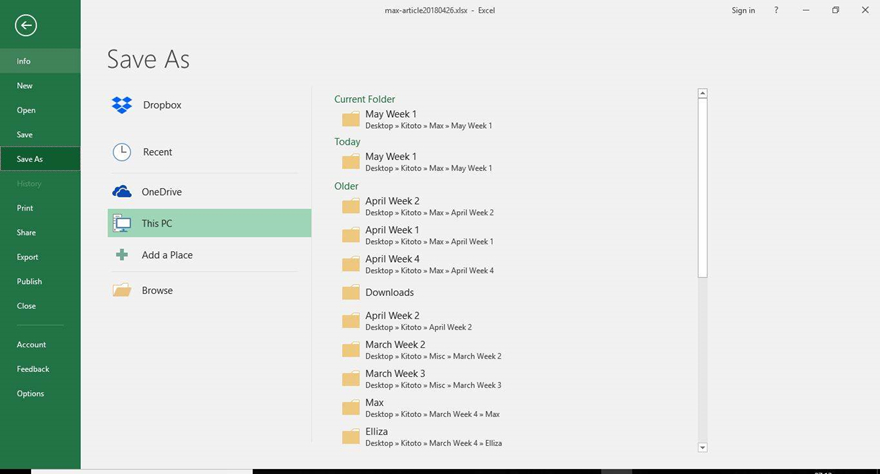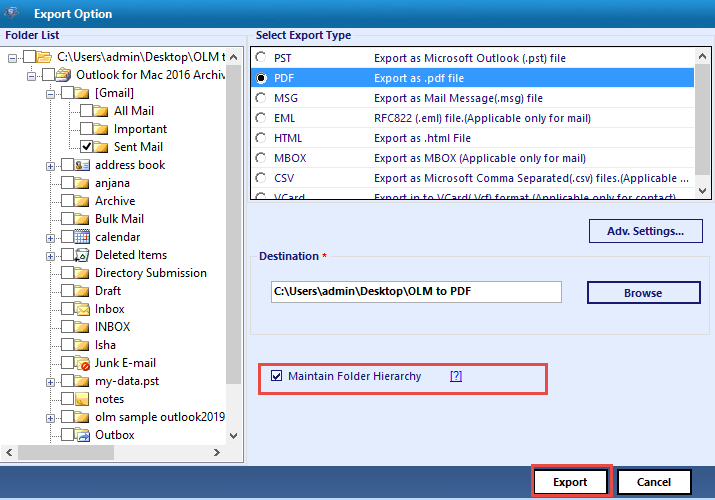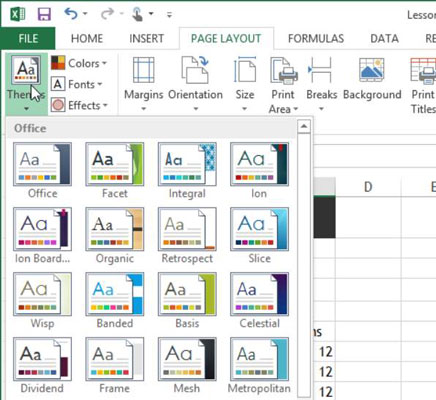

- SAVE EXCEL 2013 FILE FOR MAC USER HOW TO
- SAVE EXCEL 2013 FILE FOR MAC USER MAC OS
- SAVE EXCEL 2013 FILE FOR MAC USER UPDATE

Locate and select the following registry: HKEYCURRENTUSERSoftwareMicrosoftOffice14.0ExcelOptions. Type regedit in the Open box and click OK.
SAVE EXCEL 2013 FILE FOR MAC USER HOW TO
See Create and save all your macros in a single workbook to learn how to do this. The installation of hotfix package can be done as follows: Click Start -> Run. That’s a hidden workbook stored on your computer, which opens every time you start Excel. To make your macros available every time you open Excel, create them in a workbook called Personal.xlsb. In the Save As box, in the Save as type list box, choose Excel Macro-Enabled Workbook (*.xlsm).Ĭreate and save the macro in your Personal workbook Save it as a macro-free workbook by clicking Yes. Save it as a macro-enabled workbook (*.xlsm file type) by clicking No. such as Microsoft Windows and MAC OS, that provides a graphical user. So when you try to save it, Excel prompts you with two choices: APPA2 moving files between computer and, APP A78 sharing files and folders.

But saving a workbook with macros is a little different because it needs to be in a special "macro-enabled" file format. If you'll need the macro only in the workbook where you created it, click Save or Save As like you normally would. After you've created your macro, you'll want to save it so you can use it again in the current workbook or in other workbooks. I know it's a pain in the butt, however it works for me, I just had to go through the routine again this morning since I got remiss in updating the OS and Office file.You create a macro in Excel by running the macro recorder or by using the Visual Basic for Applications (VBA) editor. I got it down to a science now so that the one or two times it happens a year, I only lose about a half hour of work time I know it's a pain in the butt, however it works for me, I just had to go through the routine again this morning since I got remiss in updating the OS and Office file. Save the backup file with the new data, close and discard the corrupted file and make sure the new file has correct dates, macros and the file name matches the old corrupted file so any links to other spread sheets still work. Retrieve an old backup copy (you do have backups!) and paste in the current data from the corrupted file. Open the corrupted file and select/copy all the data.
SAVE EXCEL 2013 FILE FOR MAC USER UPDATE
If you do get a "file not saved" error, close the file and update both Mac and Office software. That way you won't lose any data when you do get the error message. See Create and save all your macros in a single workbook to learn how to do this. Create and save the macro in your Personal workbook. In the Save As box, in the Save as type list box, choose Excel Macro-Enabled Workbook (.xlsm). I find that when I skip a few months, the problem resurfaces.Īlways "test" save your file when you first open it to make sure it isn't corrupted. To save it as a macro-enabled workbook: Click No.
SAVE EXCEL 2013 FILE FOR MAC USER MAC OS
To avoid having this happen, update both Mac OS and Office software consistently. How do I convert this file Windows file into a Mac readable file. xls file but it wouldn't open properly on either application. xlsx format, I tried simply renaming as an. Unsaved data up to this point will be lost if you close the file. Problem is, I can't access it the file on my Mac in Excel or Numbers. Your macros disappear and the file cannot be saved. If you encounter this error in Excel, the file is corrupted. From my own experience using Office 2011.


 0 kommentar(er)
0 kommentar(er)
